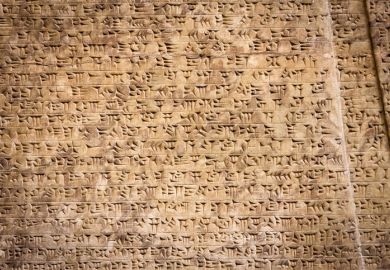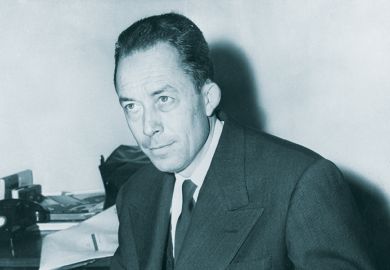Those who wonder how a figure of such outstanding significance and influence can have inspired so little scholarship and received so little posthumous recognition will welcome Nicholas Roe's account of Leigh Hunt's "first life". Whereas Byron, Keats and Shelley are staples of English literature courses, their friend Leigh Hunt has been forgotten. It is to be hoped that Roe's captivating and erudite biography of the first phase of Hunt's life will excite burgeoning scholarly interest in this unremembered giant of the Romantic tradition.
Refreshingly, the book remains largely unfettered by profitless speculations about the significance of Hunt's racial origins; only when they are of particular consequence, and usually in Hunt's own words, are they investigated. Instead, Roe's priority is clearly to present Hunt's complex Romantic character, which challenged notions of what poetry is, why it is written and why he responded to his world with an earnest hunger for liberty.
The Hunt portrayed by Roe, therefore, is one with whom it is more difficult to feel the sympathy usually demanded. He did not allow himself to be forgotten in his lifetime, nor was he someone it can have been easy to like. Arrogant and careless with the feelings of others, this Hunt seems, at times, most unappealling, though his political writing is apparently motivated by completely opposite traits. Perhaps this is why we find Keats and Byron both disconcerted by their friend's ambiguous disposition: the latter thought Hunt "conceited" and the former viewed him as reluctant "to give other minds credit for the same degree of perception as he himself possesses".
Such asides appear with regularity in this biography, and they lend weight to the view that it is written as much to entertain as to inform. The style and structure are episodic, and chapters end with suggestive cliffhangers such as: "She was content, for now, to bide her time." The book has, in some ways, the feeling of a good novel, perhaps deliberately, if Roe's ambition is to breathe life into a character so long neglected. He has amplified this feeling by incorporating fanciful descriptive passages and bizarrely fortuitous incidences of pathetic fallacy in Hunt's life story: we learn that the solitude of Hunt's incarceration is mirrored in "the harshest winter in living memory" and the death of a homeless soldier near Hunt's office, in the cold nights of an otherwise warm October of 1817, explicitly reflects the juxtaposition of social idyll and private pressures afflicting Hunt at the time. Similarly, Roe describes the competitive writing of two grasshopper sonnets on a late autumn evening by Keats and Hunt, side by side, inspired by hearing a cricket stirred by the warmth of the hearth, despite the coldness outside.
Though there is certainly a sense here that readers are expected to respond emotionally to the events of Hunt's life and times, Roe also incorporates perceptive comparisons between other poets and poetry. He draws the relationship between Hunt's muted disappointment in Keats's "Endymion" and Keats's consequent sonnet "On Sitting Down to Read King Lear Yet Again", with its frank incorporation of Hunt's criticisms and, as Roe points out, reminder of "more urgent, Shakespearean poetry". He makes a similarly compelling case for seeing, in Keats's "Lamia" and famous ode "To Autumn", Hunt's influence in its "modern philosophy of sympathy and natural justice".
However, Roe resists the temptation to make this a book about Hunt as Keats's mentor, and his exploration of all elements of Hunt's writing, including vitriolic theatrical reviews and astonishingly seditious articles in the Examiner , betrays an understandable interest in his subject for his own sake. Readers will be struck by the gently judgmental approach to Hunt's evidently rather lascivious character, and Roe makes clear his disappointment with the inconsistency of a man otherwise proud of his own marriage in the light of Hunt's announcement that he was "not a friend to marriage".
Consequently, Roe's portrayal of Hunt's nascent feminist ideals is blurred, and his sympathetic description of Marianne Hunt in Italy, lonely and suffering and excluded from the Romantic intellectual circle, contrasts starkly with her husband's "enjoying his reunion with Shelley". It is hard to claim, therefore, that this is a biography that idolises its subject, though there is much to admire in Hunt's character and resolve.
One hero does emerge from this novel-like biography, however, and that is the school attended by Leigh Hunt - and by Charles Lamb, Samuel Taylor Coleridge and other poets and celebrated intellects of the time: Christ's Hospital. There is something remarkable about this school, which inspired so many to strive for progress and equality in society and in the written word. As a model for the consequent flood of charitable Bluecoat schools around the country, it achieved - on a small but significant scale - much of what Hunt and others stood for. The significance of the lessons he learnt and the friends he made there echoes throughout this stimulating biography of Leigh Hunt's first 37 years.
Jonathan W. J. Mitchell is head of English, Magdalen College School, Oxford.
Fiery Heart: The First Life of Leigh Hunt
Author - Nicholas Roe
Publisher - Pimlico
Pages - 428
Price - £14.99
ISBN - 0 7126 0224 0
Register to continue
Why register?
- Registration is free and only takes a moment
- Once registered, you can read 3 articles a month
- Sign up for our newsletter
Subscribe
Or subscribe for unlimited access to:
- Unlimited access to news, views, insights & reviews
- Digital editions
- Digital access to THE’s university and college rankings analysis
Already registered or a current subscriber? Login



